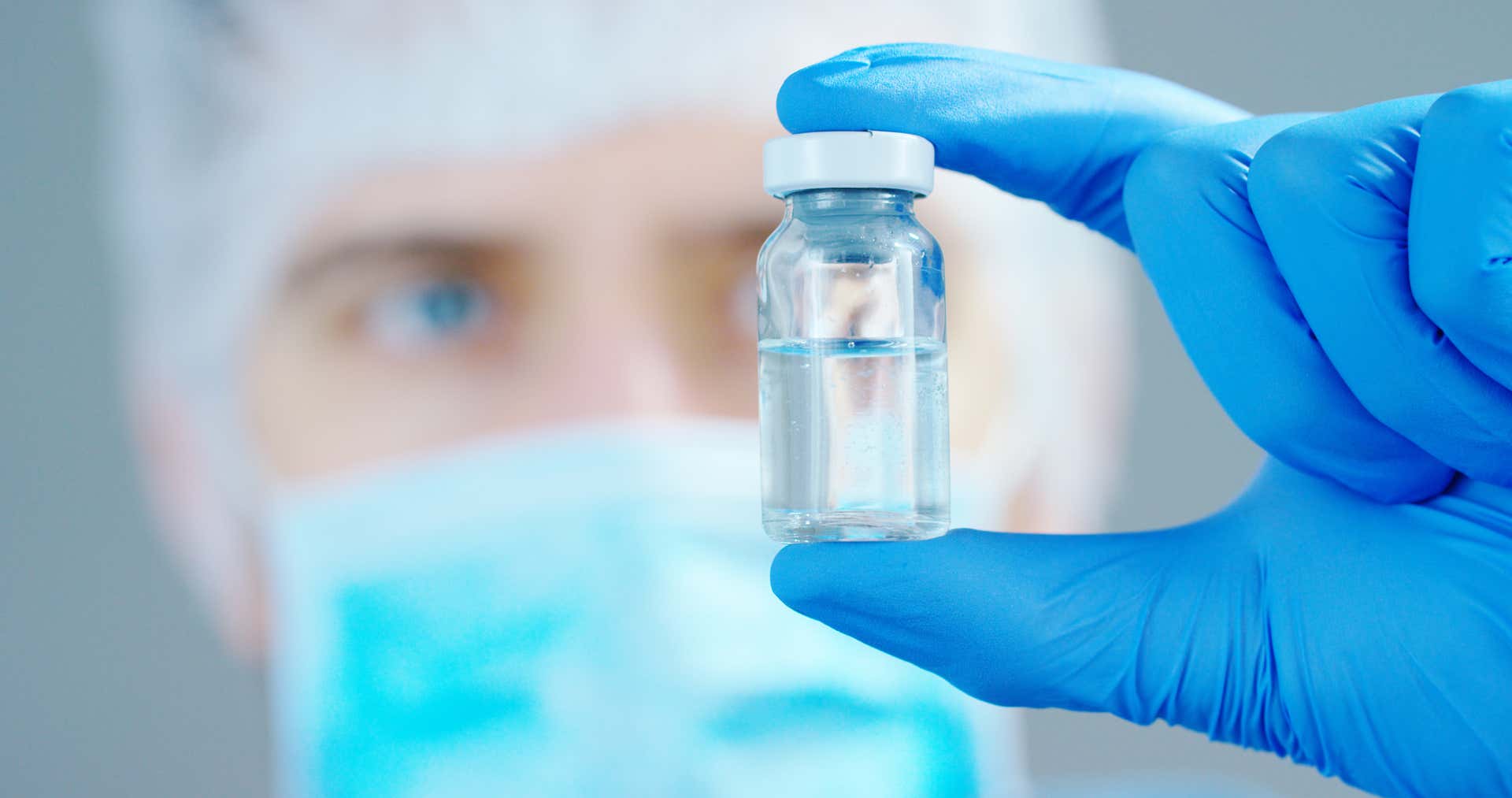Accelerate biologics drug development
Combining the best for your biologics with Creoptix

Combining the best for your biologics with Creoptix

Biologics is an exciting – and important – field of drug discovery and research. Promising new treatments for cancer and immune-mediated inflammatory disease have emerged in recent years, giving hope to millions of patients across the globe. Besides enabling medical breakthroughs, powerful analysis techniques help drive scientific progress, including in health crises.

Biologics – such as antibodies, nanobodies, and other large molecules manufactured in living systems – are highly complex. Characterizing them is an important task in drug development and quality control, but it can be a challenge.
What’s more, biologic drugs often come in multiple variants, with nature and abundance heavily influenced by the manufacturing process.

To get the information you need on drug stability and performance, you need to assess the properties in relevant sample matrices.
Over the last years, label-free quantification is gaining widespread acceptance as an important research and development method, as it analyzes molecular interactions without using additional isotope or fluorescent labels.
Our newest GCI technology is a superior approach because it enables binding kinetics to be measured reliably using low sample volumes – even from unpurified material.
![[Diagram creoptix circle updated.png] Diagram creoptix circle updated.png](https://dam.malvernpanalytical.com/737a49d4-6554-4409-b074-aec3008860fd/Diagram%20creoptix%20circle%20updated_Original%20file.png)
The Creoptix WAVEdelta is enhanced and enabled by our proprietary software wizards:
Developed with the user in mind, they drive automation, flexibility and ease of use, whether you’re working with small molecules or antibodies. Explore the key benefits below to discover more.
A faster, flexible way to screen and characterize antibodies.
A calibration-free approach to qualification.
WAVEdelta combines high sensitivity and signal stability with crude compatibility and rapid throughput.
With WAVEdelta, there’s no need to compromise on quality, speed or experimental setup.
You’re committed to delivering robust scientific results, but you also need to keep an eye on costs and schedules. Our powerful technology is designed to streamline – and speed up – workflows, cut materials and reduce waste. Creoptix waveRAPID is the new way of measuring kinetics that allows you to run more samples and probe more interactions in hours not days. With no need for serial dilutions or DMSO corrections, setup time is significantly reduced, runs are faster, and wells are freed up to run more samples. The faster interaction analysis also means that unstable proteins can also be measured more efficiently. With Creoptix, you naturally work better and faster.

Learn how no-clog microfluidics will cut instrument downtime and increase throughput - watch the video and join Allie the Antibody on a smooth ride through the WAVEsystem.
When the novel coronavirus emerged worldwide in January 2020, scientists not only scrambled to develop tests but also to understand the biology of this disease. They began tackling the problem with the tools and knowledge already on hand from studying other infectious diseases like Dengue, Zika, and Ebola. However, SARS-CoV-2 proved challenging in ways current technologies were unable to address. One example is the analysis of molecular interactions between antibodies present in complex matrices like patient blood serum and plasma and SARS-CoV-2 spike protein. Matrix components like serum albumin are often incompatible with optical biosensors due to potential deleterious effects on the microfluidics and high non-specific binding. The WAVEsystem has the potential to overcome these limitations with innovative, disposable, no-clog microfluidics. Using the proprietary GCI technology to deliver high sensitivity, the WAVE provides very high tolerance against crude matrixes and enables the characterization of antibody kinetics directly from clinical blood plasma samples.
Monoclonal antibodies are one of the best known classes of biologic drugs, developed to offer high specificity and affinity to their targets. While clinical efficacy is the ultimate outcome, getting there relies on understanding the physiological conditions to which the antibody will be exposed. During drug development, properties such as binding affinity are evaluated alongside other qualities to predict clinical efficacy. Comprehensive characterization includes real-time analysis of binding kinetics through accurate measurement of association and dissociation rates for the antibody-target interaction. To translate these results to clinic, studies should mimic conditions of the native environment as closely as possible. Creoptix allows researchers to study biologic drugs in a wide range of biofluids and other complex matrices.
G-protein-coupled receptors (GPCRs) comprise a large class of integral membrane proteins. They regulate a variety of cells’ physiological processes and are popular therapeutic targets. Today, more than 30% of available pharmaceuticals target GPCRs in indications such as hypotension, hyperglycemia and cancer. However, membrane proteins are notoriously difficult to study as they become highly unstable following extraction from the cell membrane. Their large size can also be an issue in traditional characterization approaches. With patented no-clog microfluidics, the Creoptix WAVE allows researchers to investigate GPCRs both in solution (detergent-solubilized or reconstituted into a lipidic environment such as nanodiscs) and in membranes, where they can retain their native conformation. Using the proprietary GCI technology to deliver exceptional sensitivity, the Creoptix WAVE can resolve a wide range of affinities and off-rates for enhanced understanding of G-protein/GPCR interactions.
Combining the best for your biologics with Creoptix

Biologics is an exciting – and important – field of drug discovery and research. Promising new treatments for cancer and immune-mediated inflammatory disease have emerged in recent years, giving hope to millions of patients across the globe. Besides enabling medical breakthroughs, powerful analysis techniques help drive scientific progress, including in health crises.

Biologics – such as antibodies, nanobodies, and other large molecules manufactured in living systems – are highly complex. Characterizing them is an important task in drug development and quality control, but it can be a challenge.
What’s more, biologic drugs often come in multiple variants, with nature and abundance heavily influenced by the manufacturing process.

To get the information you need on drug stability and performance, you need to assess the properties in relevant sample matrices.
Over the last years, label-free quantification is gaining widespread acceptance as an important research and development method, as it analyzes molecular interactions without using additional isotope or fluorescent labels.
Our newest GCI technology is a superior approach because it enables binding kinetics to be measured reliably using low sample volumes – even from unpurified material.
![[Diagram creoptix circle updated.png] Diagram creoptix circle updated.png](https://dam.malvernpanalytical.com/737a49d4-6554-4409-b074-aec3008860fd/Diagram%20creoptix%20circle%20updated_Original%20file.png)
The Creoptix WAVEdelta is enhanced and enabled by our proprietary software wizards:
Developed with the user in mind, they drive automation, flexibility and ease of use, whether you’re working with small molecules or antibodies. Explore the key benefits below to discover more.
A faster, flexible way to screen and characterize antibodies.
A calibration-free approach to qualification.
WAVEdelta combines high sensitivity and signal stability with crude compatibility and rapid throughput.
With WAVEdelta, there’s no need to compromise on quality, speed or experimental setup.
You’re committed to delivering robust scientific results, but you also need to keep an eye on costs and schedules. Our powerful technology is designed to streamline – and speed up – workflows, cut materials and reduce waste. Creoptix waveRAPID is the new way of measuring kinetics that allows you to run more samples and probe more interactions in hours not days. With no need for serial dilutions or DMSO corrections, setup time is significantly reduced, runs are faster, and wells are freed up to run more samples. The faster interaction analysis also means that unstable proteins can also be measured more efficiently. With Creoptix, you naturally work better and faster.

Learn how no-clog microfluidics will cut instrument downtime and increase throughput - watch the video and join Allie the Antibody on a smooth ride through the WAVEsystem.
When the novel coronavirus emerged worldwide in January 2020, scientists not only scrambled to develop tests but also to understand the biology of this disease. They began tackling the problem with the tools and knowledge already on hand from studying other infectious diseases like Dengue, Zika, and Ebola. However, SARS-CoV-2 proved challenging in ways current technologies were unable to address. One example is the analysis of molecular interactions between antibodies present in complex matrices like patient blood serum and plasma and SARS-CoV-2 spike protein. Matrix components like serum albumin are often incompatible with optical biosensors due to potential deleterious effects on the microfluidics and high non-specific binding. The WAVEsystem has the potential to overcome these limitations with innovative, disposable, no-clog microfluidics. Using the proprietary GCI technology to deliver high sensitivity, the WAVE provides very high tolerance against crude matrixes and enables the characterization of antibody kinetics directly from clinical blood plasma samples.
Monoclonal antibodies are one of the best known classes of biologic drugs, developed to offer high specificity and affinity to their targets. While clinical efficacy is the ultimate outcome, getting there relies on understanding the physiological conditions to which the antibody will be exposed. During drug development, properties such as binding affinity are evaluated alongside other qualities to predict clinical efficacy. Comprehensive characterization includes real-time analysis of binding kinetics through accurate measurement of association and dissociation rates for the antibody-target interaction. To translate these results to clinic, studies should mimic conditions of the native environment as closely as possible. Creoptix allows researchers to study biologic drugs in a wide range of biofluids and other complex matrices.
G-protein-coupled receptors (GPCRs) comprise a large class of integral membrane proteins. They regulate a variety of cells’ physiological processes and are popular therapeutic targets. Today, more than 30% of available pharmaceuticals target GPCRs in indications such as hypotension, hyperglycemia and cancer. However, membrane proteins are notoriously difficult to study as they become highly unstable following extraction from the cell membrane. Their large size can also be an issue in traditional characterization approaches. With patented no-clog microfluidics, the Creoptix WAVE allows researchers to investigate GPCRs both in solution (detergent-solubilized or reconstituted into a lipidic environment such as nanodiscs) and in membranes, where they can retain their native conformation. Using the proprietary GCI technology to deliver exceptional sensitivity, the Creoptix WAVE can resolve a wide range of affinities and off-rates for enhanced understanding of G-protein/GPCR interactions.
The Kinetics Guide | Binding kinetics with the WAVE system. Download now
Download now